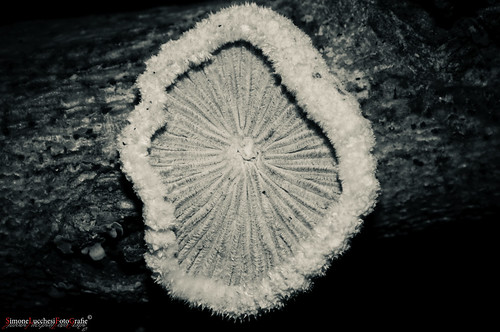Gel pieces were dried by vacuum and rehydrated in 20 ml digestion buffer (ten ng/ml modified trypsin (Promega) in fifty mM ammonium carbonate, 10% acetonitrile). Samples had been incubated at 37uC for sixteen h. Tryptic peptides were extracted by incubating two times with 65% acetonitrile/5% formic acid for thirty min on the shaker and sonification for five min adopted by incubation in a hundred% acetonitrile. All supernatants were gathered in a new tube and dried beneath vacuum. Tryptic peptides ended up dissolved in 1.five ml of fifty% acetonitrile and diluted with thirteen.five ml of .2% formic acid. Identification was executed on an Agilent 1100 LC/MSD-trap XCT sequence method. The electrospray  ionization system was the Chip Dice technique utilizing a Massive potential Chip (Agilent Technologies, Waldbronn, Germany). Sample loading (8 mL/ sample) from the microtiter plate into the enrichment column was executed at a flow fee established to 4 mL/min with the combine of the two subsequent cell phases at a ratio ninety eight:two (cell section A: .2% formic acid in H2O cell section B: a hundred% ACN). LC gradient was delivered with a flow charge of 400 nL/min. Tryptic peptides have been eluted from the reversed stage column into the mass spectrometer utilizing a linear gradient elution of twenty% B in forty min. For MS experiments, following method and tuning parameters had been utilized: Scan selection: 300000 m/z, polarity: constructive, capillary voltage: 1900 V, movement and temperature of the drying gasoline were 4 L/min and 325uC. The MS/MS experiments have been carried out in car MS/MS method using a 4 Da window for precursor ion choice, an absolute threshold of 10,000, soon after three MS/MS spectra, the precursor ion were excluded from fragmentation for at minimum one particular moment. The generic files for database looking were produced by Knowledge Investigation software program version 3.four, for precursor ion selection a threshold of 5 S/N was utilized and the absolute number of compounds was restricted to a thousand for every MS/MS experiment. Protein identification was carried out with Mascot computer software[forty two]. MS/MS datasets had been employed to lookup the spectra from the human subset of the Swiss-Prot database[forty three].To immunoprecipitate vimentin from protein extracts, 5 mg of the CLL BCR Ig014 had been incubated for 3 hrs at 4uC on a rocking platform with distinct protein U-100480 cost extracts in a complete quantity of five hundred ml (focus of protein extracts two mg/ml). Per reaction, twenty ml of fifty% sepharose-G slurry was washed in PBS 2 times, added to the reaction and incubated for yet another thirty minutes. Sepharose-G beads had been pelleted at 500 rounds for every minute (rpm) in a desk centrifuge and washed two times with PBS. The beads had been resuspended in sample buffer and subjected to 1-dimensional SDS Web page as described above. The presence of immunoprecipitated materials, respectively vimentin, was decided by western blot analysis using Ig014 or an anti-vimentin antibody for detection.Coomassie-stained two-dimensional electrophoresis gels and immunoblots have been scanned16883306 (Bio-Rad) and analyzed by Delta 2d software program (Decodon).
ionization system was the Chip Dice technique utilizing a Massive potential Chip (Agilent Technologies, Waldbronn, Germany). Sample loading (8 mL/ sample) from the microtiter plate into the enrichment column was executed at a flow fee established to 4 mL/min with the combine of the two subsequent cell phases at a ratio ninety eight:two (cell section A: .2% formic acid in H2O cell section B: a hundred% ACN). LC gradient was delivered with a flow charge of 400 nL/min. Tryptic peptides have been eluted from the reversed stage column into the mass spectrometer utilizing a linear gradient elution of twenty% B in forty min. For MS experiments, following method and tuning parameters had been utilized: Scan selection: 300000 m/z, polarity: constructive, capillary voltage: 1900 V, movement and temperature of the drying gasoline were 4 L/min and 325uC. The MS/MS experiments have been carried out in car MS/MS method using a 4 Da window for precursor ion choice, an absolute threshold of 10,000, soon after three MS/MS spectra, the precursor ion were excluded from fragmentation for at minimum one particular moment. The generic files for database looking were produced by Knowledge Investigation software program version 3.four, for precursor ion selection a threshold of 5 S/N was utilized and the absolute number of compounds was restricted to a thousand for every MS/MS experiment. Protein identification was carried out with Mascot computer software[forty two]. MS/MS datasets had been employed to lookup the spectra from the human subset of the Swiss-Prot database[forty three].To immunoprecipitate vimentin from protein extracts, 5 mg of the CLL BCR Ig014 had been incubated for 3 hrs at 4uC on a rocking platform with distinct protein U-100480 cost extracts in a complete quantity of five hundred ml (focus of protein extracts two mg/ml). Per reaction, twenty ml of fifty% sepharose-G slurry was washed in PBS 2 times, added to the reaction and incubated for yet another thirty minutes. Sepharose-G beads had been pelleted at 500 rounds for every minute (rpm) in a desk centrifuge and washed two times with PBS. The beads had been resuspended in sample buffer and subjected to 1-dimensional SDS Web page as described above. The presence of immunoprecipitated materials, respectively vimentin, was decided by western blot analysis using Ig014 or an anti-vimentin antibody for detection.Coomassie-stained two-dimensional electrophoresis gels and immunoblots have been scanned16883306 (Bio-Rad) and analyzed by Delta 2d software program (Decodon).
